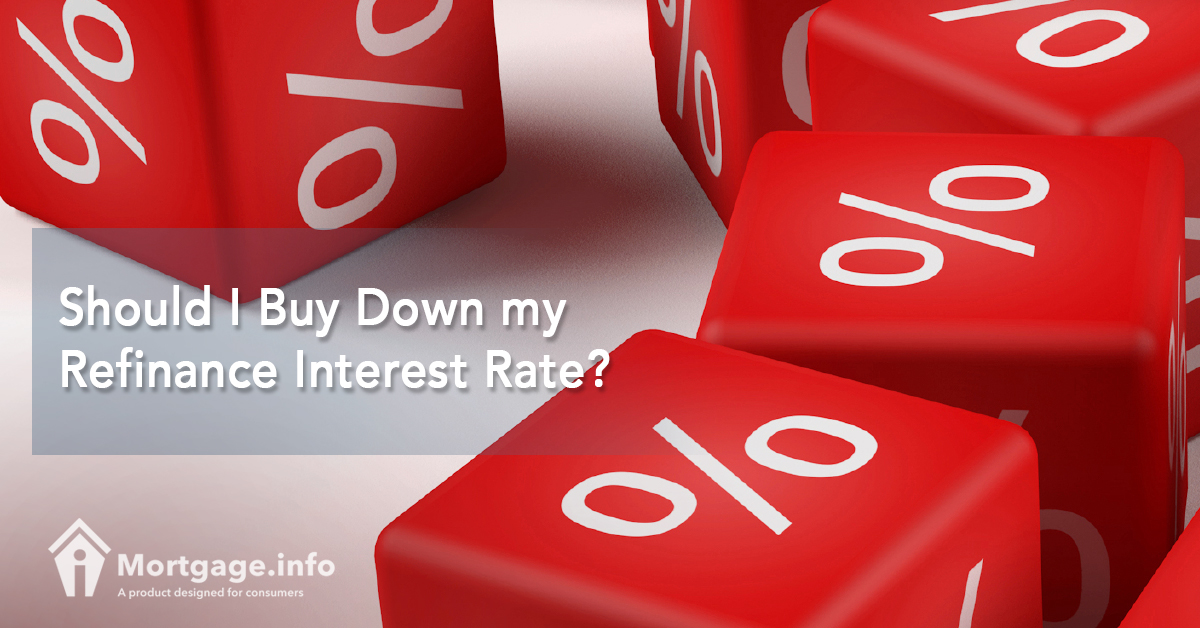Saving money on your monthly mortgage payment sounds like a good idea. Therefore, it makes sense to pay for a lower interest rate, right? This is not always the case. It depends on many factors including how long you will stay in the home, the cost of the lower rate, and how it will affect your finances right away. When you buy down your interest rate, you pay points. One point equals 1% of the loan amount. So, on a $200,000 loan, one point equals $2,000. You can pay a few points in some cases, although the Qualified Mortgage Guidelines greatly limit how much one borrower can pay. But, in the end is it worth it?
The Tradeoff Between a Rate Buy Down and Taking the Higher Rate
You might wonder what the difference is between the rate buy down and taking the higher rate. Here is an example:
Joe has two options:
- Option 1: A $200,000 loan with a 5% interest rate and zero points
- Option 2: A $200,000 loan with a 4.5% interest rate and one discount point
Option 1 results in a payment on a 30-year loan of $1,074. Joe does not pay any extra costs at the closing outside of the standard closing costs.
Option 2 results in a payment on a 30-year loan of $1,013. In this case, Joe must pay an additional $2,000 at the closing, but he saves $61 per month.
In the case of option 2, it will take Joe just about 33 months to start realizing the $61 savings. This is how long it takes to recoup the $2,000 he paid up front. If Joe knows he will move within 3 years of refinancing, it does not make sense to pay the point for the lower rate. However, if Joe does not have moving plans in the near future, it may make sense. Over the life of the loan, Joe would save $21,700 over the life of the loan. Even if Joe moved after the first three years but before the 30-year term was over, he could still stand to save a significant amount of interest.
How Lenders Determine Points
There is no rhyme or reason to the amount you pay for each lower interest rate. You can ask your lender for a variety of interest rates to see the difference, though. They will usually start with the par rate. This is the rate you can receive without paying any points. From there, they generally show you the rate that one or two points would result in if you paid them. Rates often decrease 1/8th of a point for every 0.25% you pay; however, the lower you want the rate, the more the points increase.
The Benefits of Paying the Points
The obvious benefit of paying points is to secure a lower rate. In the long run, you end up saving money. This could be a good long-term financial strategy. In the beginning, you also gain the benefit of writing off the points you pay on your taxes. As long as you itemize your deductions, you should be able to write off this expense. This helps to lower your tax liability, which can speed up the time it takes to make the money back that you paid for the lower rate.
In some cases, buying your rate down can help you qualify for a larger mortgage too. If want cash out of the equity of your home, you may need a lower rate for your debt ratio to fit within the guidelines. Borrowers often resort to paying for a point or two to make their debt ratio fit. Even though these borrowers pay money to get money, the amount they receive in return makes up for the money they had to come up with for the closing.
Deciding whether you should buy down your interest rate or take the par rate is a personal choice. Stop and think about your long-term plans. If you do not foresee yourself in the home for a long time, it is often not worth it. However, if you do plan on staying in the home for the long-term, look at all of your options. It might not make sense to pay an excessive amount of points for a lower rate, but paying a point may give you more savings, making the refinance worth it. Sit down and crunch the numbers before you make any decisions to see what is right for you.

